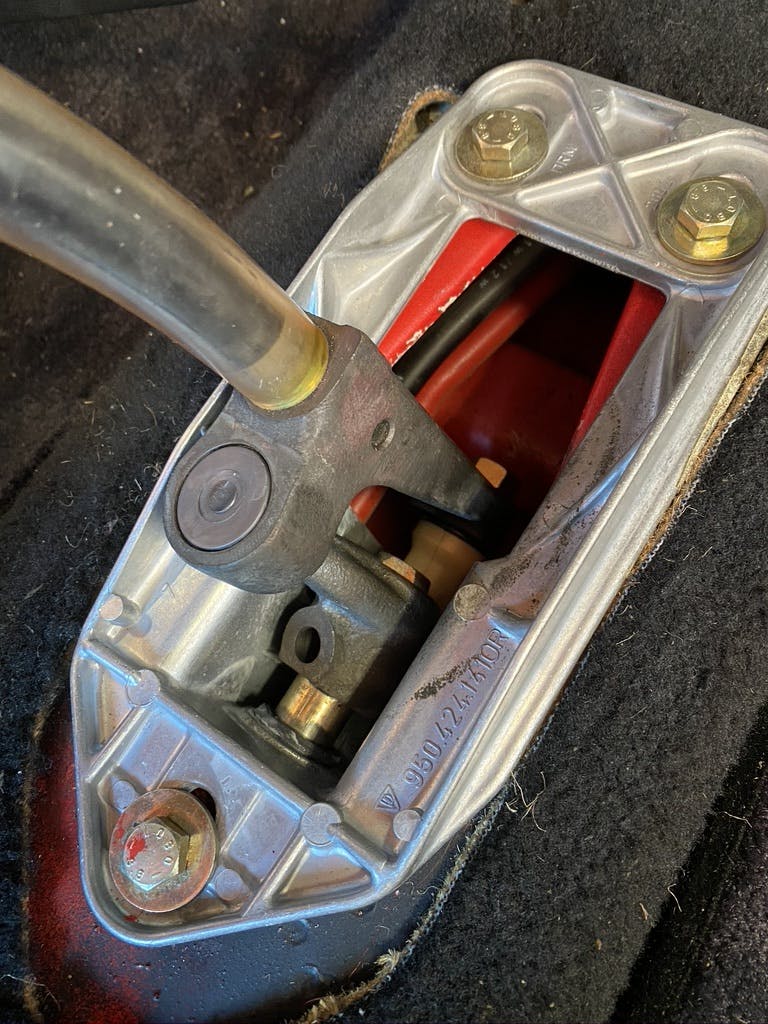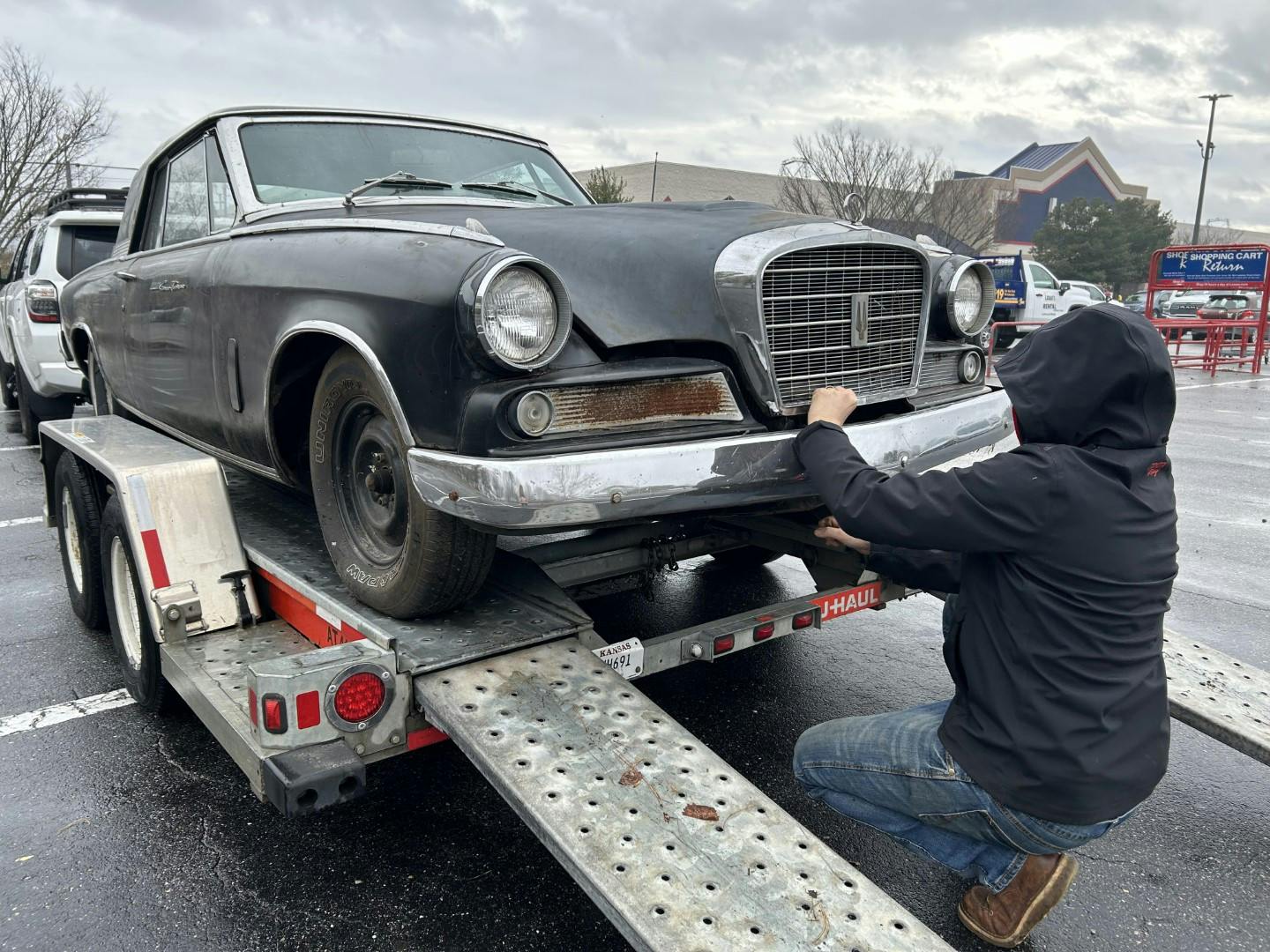6 Adjustments You Forgot About on Your Vintage Car
Cars, especially vintage ones, were built with a certain amount of regular maintenance in mind. As our daily drivers slip further and further into the black hole that is things like “lifetime transmission fluid” and items that require more calibration than actual maintaining, it gets easier to forget all the items that should be kept up on our fun-to-drive cars. Always on the look out for you, we took a moment to make a quick reminder list of items worth checking … especially if you can’t remember the last time.
Door Strikers

Look, we aren’t going to get into a long-winded discussion about how gravity seems to get stronger as we age, instead we are just pointing out that the same forces are applied to our cars, too. Doors can sag a bit with use even with perfect, well-adjusted hinges. Taking a minute to properly align the striker and latch on your doors will pay back tenfold every time you get in and out. If the striker and latch just won’t line up like they should, be sure to check the condition of the hinges and pins prior to modifying the striker or latch to make it work; the latch can only compensate for so much sag from the hinges.
Clutch Pedal

There are several methods of transferring and multiplying the driver’s left-leg force to connect and disconnect the engine from the transmission. Whether cable, hydraulic, or rod linkage, there is likely an adjustment that can be done to ensure that the clutch is being operated as designed. In addition to helping ensure those parts have long lives, this will also allow the pedal to do its job by putting the engagement point in a nice place and making the car easier to drive. Take a moment to grease or lubricate any pivots, and don’t be surprised if you have to re-learn how to drive your own car.
Shift Linkage

Driving a manual transmission can be so rewarding and fun, but those feelings rarely come from shifters that have all the tactility of a knife in a jar of peanut butter. Is that third? Fifth? I didn’t even think this car had a fifth gear?
Shifter adjustment and maintenance is often a little finicky due to having to deal with the center console, but it’s worth the effort. New bushings go a long way for most shifters, but an old rod-actuated transmission might need nothing more than just double checking the rods are the correct length, clean, and not binding. You might not think your shifter is so bad, but this is one of those circumstances where the parts wear slowly and we often don’t notice it fading over time. Also worth noting: Check forums or clubs for potential shifter upgrades. There always seems to be someone re-engineering a shifter and selling kits to improve the feel or durability.
Steering Box


Keeping a bias-ply-shod car between the lines can be tough enough at times, and slop in the steering box can only make things worse. The steering gearbox is a relatively simple part of a car, but like every other piece there is wear that adds up over time. Often the resulting “slop” in the steering feel is just chalked up to “old car feel” rather than dealt with appropriately.
There are a lot of types of steering boxes and arrangements, so unfortunately we can’t give a short how-to here. Refer to your favorite service manual or marque expert for the process and potential common pitfalls before attempting a DIY adjustment. Steering boxes are precision and are often adjusted as such. If in doubt, take it to a pro.
Headlights
For fear of late-night animal crossings, or just the numbers of bugs that accumulate across a delicate chrome grill, it seems most vintage rides rarely stay out past dusk. Even if you plan to stick to a curfew for your old car’s entire life, being prepared to brake it is still a good practice and that means you need to be able to see. Well-aimed headlights can make a huge difference in overall effectiveness and visibility—both the good and the bad kind: Your light should be showing you the road rather than potentially blinding oncoming traffic. We want to been seen while driving, but a headlight pointed right at other drivers isn’t the best way to go about it.
Hood Latch

While you’re up by the front taking care of those headlights, be sure to take a moment and pop the hood to check the latch is in good shape and holds properly. A hood flying up and over is not a situation that anyone wants to be in while driving, especially not in their vintage car. And that’s before we talk about repairs.
Instead, double check that the mechanism moves freely, and that the latch attached to the hood is both secure and hitting the appropriate place when closing. Use lubrication appropriate for the situation and drive a little easier knowing your hood will be staying right where you put it.
***
Check out the Hagerty Media homepage so you don’t miss a single story, or better yet, bookmark it. To get our best stories delivered right to your inbox, subscribe to our newsletters.



Want to thank one and all for the entertaining read whilst I wait at the dental office.
From my own gallery of mishaps my at the time 10 year old 79 Trans Am let’s just say thank goodness they had a big hole in the hood for the air filter. Lesson learned make sure that sucker is latched and secured.
I used my emergency brake for months as I needed a master cylinder and didn’t have the money for it. I had a 1973 Ford Pinto at the time I’m have my 12th & 13th Pinto I have own one since the 80’s.
A good article. I’ve seen many nice “shiny” cars with doors that don’t close properly, hoods askew due to poor latch adjustment, etc. You did forget to mention roll-up windows. Sad to see a car with great paint, replated trim, new upholstery and the windows are crooked (especially hardtops) and when you close the door the window rattles and bangs and sounds CHEAP. I take the doors of my old cars apart, re-line the window channels, clean and lube the window winders and door latches. Every time I roll the window up or down, or open and close the door I’m rewarded by my efforts. Sounds and works like new.
Don’t forget to lube the Feederstotter Valve
All great comments…. always learn something new here!
Lube everything where there is metal on metal.. Check tightness of oil drain plug, transmission drain plug, rad hose clamps, rad drain plug, power steering components, windshield washer reservoir pump grommets, etc., etc…
All old cars need regular maintenance and adjustment. Guys who inherit/resurrect old Ramblers really need to remember two things on the old 195.6 OHV straight six — the head bolts need retorquing/checking every 10K miles or so (service manual says 8K, but with newer head gasket material — I doubt any haven’t been changed — 10-12K is good). The engine is a conversion from the 195.6 L-head and some concessions had to be made to do it without changing the block too much. So some of the sealing surfaces are narrow, the head bolt pattern isn’t the best, and the head is rather thick and heavy. All that iron expands and contracts as much as 0.020″ during a heat/cool cycle. That eventually loosens the bolts. Just take a clicker wrench, set to 62 ft/lbs, and hit every head bolt in 10-12K miles or every third year, whichever comes first. No need to worry about sequence, they don’t loosen that much! Some won’t be loose at all, some will take 1/8-1/4 turn, and one or two may need as much as half a turn. Not doing this will lead to the head getting loose enough to leak at the head gasket. That usually shows up due to the engine running hot, and running it hot leads to cracked heads, especially since it’ most likely been run hot a few times already. Good heads are hard to find for an engine that hasn’t been made since 1965.
These also have mechanical lifters, not hydraulic! So the valves need to be adjusted about the same time you’re checking the head bolts. The valve cover has to come off to check half the head bolts anyway. The exception is the 61-64 aluminum block engine. It had hydraulic lifters. The aluminum block engine still had a similar rather massive cast iron head, but the die-casting required rearranging the head bolt pattern, so heads won’t interchange. Most internal parts, however (crank, rods, pistons), will.
I’M ALWAYS DOING SOMETHING WITH MINE! GOT ALL THOSE CHECKED OFF!